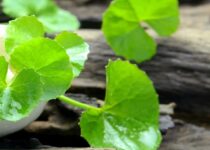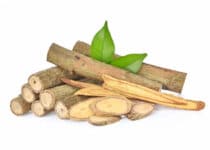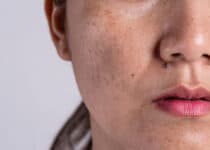What Do Pimples On The Forehead Mean?
I Tend To Ask The Meaning Of These Pimples
In the teenage years, it’s pretty normal to have pimples and tiny bumps on your forehead. Often times, we would be like a cry baby and asking “What Did I Do Wrong?”, “Did I Eaten Something Wrong?”, “What Do Pimples on the Forehead Mean?” and a whole lot of other questions pop up in our minds.
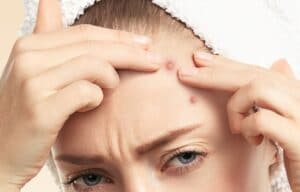
Those pimples appear because of the increase of hormonal growth that your body is going through during puberty. So, don’t freak out, okay? Leave it be and let them come out, and it will clear up soon.
There’s also this method called “Face Mapping.” It’s been well known in Traditional Chinese medicine, wherein they believe that your skin condition is a reflection of your internal health. This somewhat makes sense. A prime example is when women are going to have their periods. There’s a change in their hormonal balance, since menstruation is right on the corner, causing pimples’ appearances.
What Causes Pimple and Meaning Of Pimple Location (Meaning On The Forehead)
Pimples on your forehead are mainly about digestions, constipation, and overall gut health. It is highly recommended to take care of your gut health first. You have to clean up your diet so that you will maintain balance in your food intake. Also, it would be best if you reminded yourself of the word “moderation.” Once you take care of your digestive health, you might start to see your skin clearing up.
- Upper Forehead
It is said to be linked with the digestive system, particularly the large intestine and bladder. Having poor digestion will lead to a large build-up of toxins. Our body will need to detoxify, and one of its ways is the appearance of pimples. You might need to eat more foods and drinks rich in antioxidants such as green tea, lemon water, and berries.
- Lower Forehead
It is said to be associated with a person’s mind and spirit. It may be due to irregular sleep patterns, stress, depression, bad blood circulation. Try to sleep early at least before 11 pm. Find ways to distress your mind. Relax, pamper yourself, keep your mind off of work or school for a moment. Go to a stress-free environment like a quick ride going to the hills or the beach, or just take a long bath in your bathroom that would definitely do the trick.
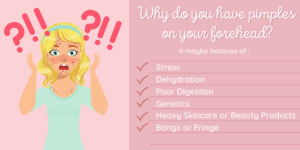
Overall, here are the main reasons why you have pimples on your forehead:
- Stress
Of course, your skin will also react to stress. There is this thing called “Emotional Acne”. It is caused by emotions and primarily stressing yourself out. If you tend to talk bad to yourself, putting yourself down and belittling yourself, please stop. It affects not only your physical health but also your mental health, your overall health actually. Try to chill a bit and remind yourself that you’re doing great, okay?
- Dehydration
Always, always, always drink water at least 1.5 liters for 2 hours. It may be a hassle since you often need to go to the bathroom, but your body will definitely reward you. Water is simply beneficial for our holistic health, so keep a water bottle with you at all times.
- Digestion
Drinking warm water with lemon eliminates congestion in the digestive system, and then your forehead follows, clearing up pimples on your forehead. You need to eat foods that are high in fiber and avoid eating triggering foods such as processed foods, dairy, and oily foods. Not that I’m telling you to completely ban yourself from eating them, but what I mean is to moderate your intake on triggering foods.
Take care of your liver since it is our body’s detoxifier, we want it to detoxify our body and then, later on, would show up on our skin too. Incorporate foods with probiotics like lactobacillus commonly found in yogurts and some probiotic drinks too.
- Skin care
Heavy, thick, and greasy skincare products might cause clogging on your pores. You will need to double cleanse and exfoliate using masks. There might also be ingredients found in your skincare regimens that are triggering those bumps, we’ll discuss them down below.
- Bangs or Fringe
If you have bangs or fringe, you will most likely build up pimples on your forehead. Your hair always touches your forehead, and your hair produces natural oils too, which will really be a contributing factor. Also, when you sweat, your bangs tend to stick unto your face. You might want to clip them away when your sweaty and oily.
Another is hair products, and you might be using hair serums or oils that would be triggering your skin, especially in the hairline area. Try to avoid putting serums near your forehead or hairline area.
- Genetics
Hereditary factors will never be out of the picture. In these cases, it is best to consult your dermatologist and have your skin checked.
Fungal Acne (This Acne Also Tend to Develop On The Forehead)
Are you seeing tiny bumps on your forehead that appear like acne but they are not? It may be because of Fungal acne.
Fungal acne is neither acne nor a fungus. The technical term is Pityrosporum Folliculitis or Malassezia Folliculitis. It is mainly caused by yeast buildup that occurs on the skin. Commonly, mistaken as acne and people try to treat it like acne, which is not effective, better to go see a dermatologist. Oftentimes, these bumps are itchy, and they usually appear on areas that get oily like t-zone, back or chest, and shoulders.
Malassezia grows on our skin naturally, it’s overproduction causes fungal acne. They cause trouble when they feed on too much sebum. They grow bigger and appear in clogged in yellowish-whitish bumps. They feed on sebum, sweat, and products. Also, their growth is typical in hot and humid weather.
Antibiotics and benzoyl peroxide are not treatments, but they can minimize their appearance. When you try to squeeze them, they don’t come out since they sunk deeper down to the hair follicle. It can also be treated using an athlete’s foot spray but only works on milder cases. Some people can develop both fungal acne and bacterial acne (regular acne). It may look different on different skin, and treatment can be different.
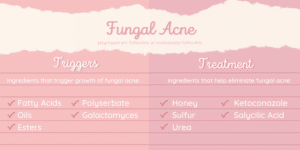
Ingredients to watch out
Fatty acids and oils such as:
- Lauric acid
- Myristic acid
- Stearic acid
- Linoleic acid
- a-Linolenic acid
- Oleic acid
- Palmitic acid
Safe oils
- MCT oil (caprylic/capric triglycerides)
- Squalane oil
- Mineral oil
You might want to avoid Esters
Ester is a hybrid of alcohol and fatty acids. Anything that ends with ‘-ate’ is esters. Although it is an effective emollient, giving the product a lightweight texture might cause Fungal Acne.
- Polysorbate
It is an effective emulsifier that helps in combining oil and water ingredients but will most likely be food for Malassezia.
- Galactomyces
This is commonly found in many fermented skin care products.
Ingredients that may or may not affect the growth of fungal acne (for safety purpose, it is better to stay away):
- Cholesterol
- Ceramides
- Phospholipids
- Squalene
Difference Between Pimple And Acne
Did you know that pimple and acne are two different things? Acne is actually a form of a disease, and like any other disease, symptoms often occur to know if we have that disease or not. In this case, the pimples are the symptoms. Acne is a condition affecting the skin’s hair follicles and oil glands.
Sebum is an oily substance that is created by a gland on your pores under the skin. The glands and pores are connected by a canal known as a follicle with thin hair that grows out to the skin’s surface.
When sebum and dead skin cells clump together, they form a plug in the follicle, which causes inflammation, leading to red pimples shown in acne. There are many symptoms when you have acne, and these are having whiteheads, blackheads, papules, pustules, nodules, and cysts.
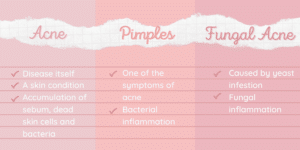
Difference Between Pimple Acne And Fungal Acne
Pimple acne and fungal acne often are misunderstood to be precisely the same, but when you study about it, you will come to the conclusion that both of them are two different things.
Pimple acne or whiteheads are closed pores that have sebum trapped under a thin layer of skin. A small white bump on your skin will appear when the oil mingles with dead skin, and the pore is not open. You can identify whiteheads through looking at all the small white bumps on your face. If the little white bumps are “poppable”, it means that it can be extracted out and can be cured.
Fungal acne, on the other hand, is basically a yeast overgrowth or infection. Fungal acne is hard to cure on your own or if you do self diagnose. If those tiny bumps on your skin are associated with itchiness, then it is certain that the bumps are fungal acne. These bumps are often seen in a cluster and are typically uniform in size. The difference between the two is that fungal acne is uniform in size, usually is itchy.
Another difference between the two of them is the way on how to eliminate them. There are different ways on how to reduce pimple acne, and it might be through using different skincare, facial washes, or ointments. When you treat fungal acne you must be really cautious about what to apply on your skin, or the best way to do is to ask a dermatologist, we all have different skin which means that if that ointment cured his/her fungal acne, that doesn’t mean that it can heal yours.
Ingredients That Can Be Used As Fungal Acne Treatment:
- Ketoconazole
Very effective in eliminating fungal acne. Mostly present in most anti-dandruff shampoos such as Nizoral shampoo.
- Honey
You can apply honey as a spot treatment.
- Salicylic acid
Commonly found in BHA products. Every product specifically for oily and acne-prone skin contains this ingredient.
- Sulfur
It effectively sheds the fungal on your skin.
- Urea
Very moisturizing and also treats atopic dermatitis and eczema.
How To Use An Anti-dandruff Shampoo To Your Face?
Use it as a wash. Lather it on the affected area and leave it for a minimum of 5 minutes. It is recommended to wash 2-3x a week. After you clear out fungal acne, you need to do maintenance since Fungal acne can be treated, but it is prone to recurring. After applying the Nizoral shampoo, you can continue your regular skincare routine. You would need to hydrate your skin since Nizoral is drying.
To conclude, what you really need here in battling acne is a lot of patience. Pimples on your forehead are said to be an indication that you have bad digestion. You might want to take good care of your gut health first. Treating your acne down to its roots will be more effective than just superficial treatments like lathering cleansers and spot creams.
If you’re trying out products, always remember to patch test and use them for at least a month. If it causes irritations and sensitivity to your skin, cut it off. Of course, it is always very efficient to consult a dermatologist for treatment.
To know more about fungal acne and suitable products to be used, you can read my previous article here.
Products That Can Be Used To Reduce Pimples Breakout:
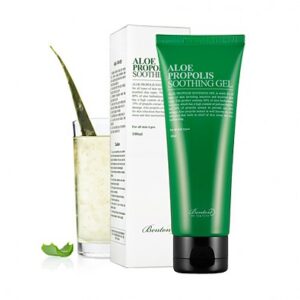
The Benton Aloe Propolis Soothing Gel contains no harmful ingredients. It uses natural extracts and preservatives instead. With less chemical ingredient, it reduces the chance of skin breaking out.
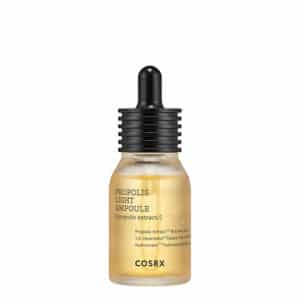
Containing 83.25% (and that is a lot) black propolis, this ingredient is antibacterial and anti-inflammation. Cosrx Propolis Light Ampoule helps reduce redness and provide healing to stressed skin.
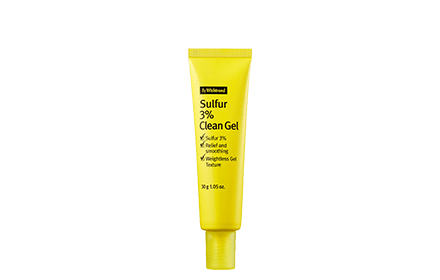
Sulfur 3% Clean Gel By Wishtrend is a cleansing gel that helps unclogg pores and prevent acne. The Collodial Sulfur goes into the pores to dry out the skin surface and absorb oil. It also dries out dead skin cells so that the pores remain unclogged. Though it sounds like it’ll suck out all of the moisture from the skin, this is not really the case. It has two hydrating ingredients Sodium Hyaluronate and Tocopherol to prevent the skin from completely dried out.
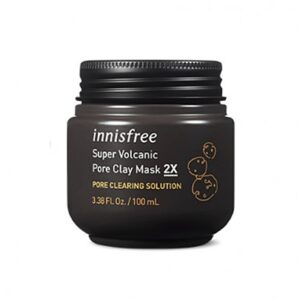
Innisfree Super Volcanic Pore Clay Mask 2x claims to be one of the top clay masks in Korea. It has AHA ingredient that helps in exfoliating dead skin cells.
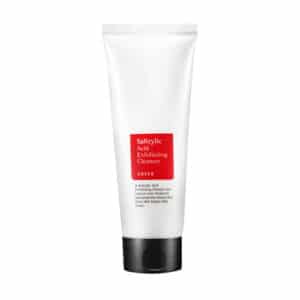
Cosrx Salicylic Acid Daily Gentle Cleanser can be used by all skin types including sensitive. This cleanser is gentle and it removes impurities and excess sebum and prevents pimples and blemishes from breaking out.
